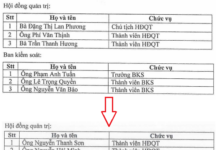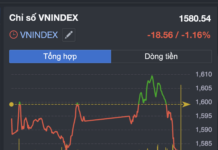In line with global trends and government directives, green finance and capital instruments like green bonds are becoming increasingly vital for Vietnamese businesses. However, this process is still in its infancy, and companies face numerous challenges.
On the sidelines of the seminar “Driving Sustainable Infrastructure Investment in Vietnam: Credit Guarantee Tools – Success Stories and Breakout Potential” on September 24th, Ms. Vương Thị Huyền, Chairwoman of Fast Capital Solution and Independent Board Member of Loc Phat Commercial Joint Stock Bank, detailed the key obstacles businesses encounter when accessing these financial tools.
 Ms. Vương Thị Huyền – Chairwoman, Fast Capital Solution
|
Four Major Challenges for Businesses
First, demonstrating a project’s “green” credentials is the most fundamental hurdle. Green bonds are relatively new to most Vietnamese companies. To issue them, businesses must prove their projects are “green.” However, many lack a robust Environmental, Social, and Governance (ESG) framework or established green standards, making it difficult to validate and convince investors of their sustainable capital use.
Second, proving financial viability and debt repayment capacity. Companies must demonstrate that their projects generate sufficient cash flow for long-term debt repayment and align with investor risk appetite. Green projects, especially in infrastructure, often have long payback periods, requiring compelling cash flow projections.
To mitigate risks for long-term investors (like insurance companies), multilateral financial institutions (DFIs) such as GuarantCo (part of the Private Infrastructure Development Group – PIDG) and CGIF (Credit Guarantee and Investment Facility of ASEAN+3) play a crucial role. They provide credit guarantee packages, enhancing bond credibility. However, accessing and meeting their requirements is challenging.
Third, an incomplete legal framework. Vietnam’s policies and laws for green bonds still have limitations. For instance, new regulations prevent commercial banks from managing collateral for bond issuances unless they participate in lending or capital arrangement. Previously, banks often fulfilled this role, but the new rules leave many issuers struggling to find suitable collateral management agents.
Fourth, high costs and complex issuance processes. A green bond transaction involves numerous parties (up to 15-16), including consultants, law firms, credit rating agencies, and second-party opinion providers.
Managing and coordinating these parties is burdensome for typical businesses, requiring professional project management consultants. This complexity not only extends timelines but also increases overall issuance costs, deterring many companies.
Interest Rate Dilemma: Unclear Financial Benefits
According to Ms. Huyền, a major psychological barrier is the cost of capital. Many businesses expect green bonds to offer lower interest rates, but in reality, total costs can be higher than conventional bonds. This is due to stringent international standards (e.g., from the International Capital Market Association – ICMA) and fees for consultants and auditors.
Currently, bond interest rates largely depend on the issuer’s risk profile. With additional guarantee fees from DFIs, total rates may rise to levels comparable to those of conventional bonds issued by the same company, diminishing direct financial incentives.
To address this, government support is needed through policies like interest subsidies and including green bonds in preferential loan portfolios, creating a clear competitive advantage and encouraging businesses to choose this funding channel.
Market Size and Potential
In terms of interest rates, a 20-year green bond in Vietnam with a GuarantCo guarantee might have a fixed rate of around 8.5% per annum in VND. With CGIF backing, rates could be 0.5-1% lower, but CGIF’s credit assessment requirements are far more stringent.
Regarding scale, current non-bank corporate issuances typically range from 50 million USD to 100 million USD (approximately 1,200-2,400 billion VND).
As for potential, infrastructure is a priority for DFIs. However, traditional funding for infrastructure still relies heavily on bank loans, and the bond market is not yet large enough to replace this.
In conclusion, for the green bond market to truly flourish, Vietnam needs synchronized solutions: a refined legal framework, specific financial support policies from the government, and proactive efforts from businesses to establish sustainable governance frameworks.
– 14:05 24/09/2025
VPBank Successfully Issues $300 Million International Sustainable Bond
VPBank (HOSE: VPB), a leading Vietnamese commercial bank, has made history by becoming the first bank in Vietnam to successfully issue $300 million in sustainable bonds on the international market. This milestone marks a significant advancement for Vietnam’s banking sector on the global stage of sustainable finance.
“Shrimp Exports to the US Face a Tide of Taxes and Trade Barriers”
The seafood industry is facing a myriad of challenges, as shared by a representative from the Fisheries Association at a recent conference. The speaker expressed hopes for a more conducive environment and tailored financial tools to emerge in the future, akin to what NamABank offers, enabling seafood businesses to thrive sustainably and enhance their global competitiveness.
Unlocking Green Finance in Vietnam: From a “Common Language” to an International Financial Center
Experts have outlined a clear roadmap to boost sustainable investment in Vietnam. The government’s introduction of a “common language” is seen as a breakthrough policy move, while the future establishment of an International Financial Center is expected to be the “key” to enhancing transparency and investor confidence. These foundational solutions aim to bridge the gap between the massive capital requirements for Net Zero goals and the current market’s modest size.







































